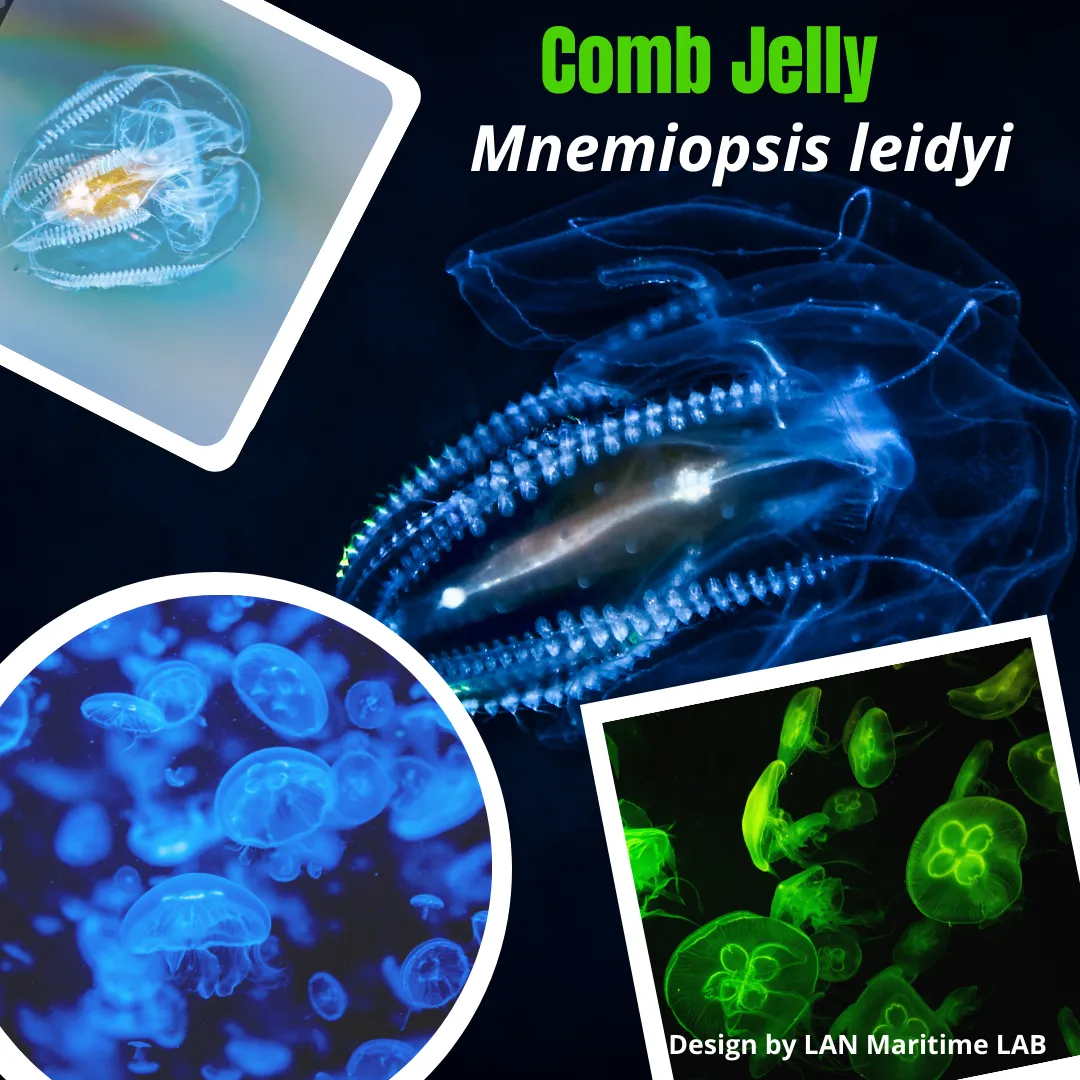Invasive Species
BALLAST WATER: a risk not only for ecosystems
Invasive aquatic species, as well as physical-chemical characteristics of ballast water are one of the greatest threats to the world’s oceans and can cause extremely serious impacts on environmental, economic and public health conditions.
Ballast water is recognized by the World Health Organization and the International Maritime Organization, as one of the main vectors for the spread of potentially invasive alien species, and is responsible for the global daily transfer of diferente marine species.
Ballast water typically contains a variety of materials, including plants, animals, protozoa, eggs, larvae, spores, viruses and bacteria. There are hundreds of organisms transported in ballast water that cause ecological effects external to their natural environment, that is, to the different biomes to which they can be released.
In addition to the consequences for ecosystems, the invasion of species by ballast water causes high economic losses worldwide. Human health is also affected by the spread of diseases such as paralytic shellfish poison, cholera outbreak, etc.
The International Maritime Organization lists the ten most unwanted species in ballast water operations.
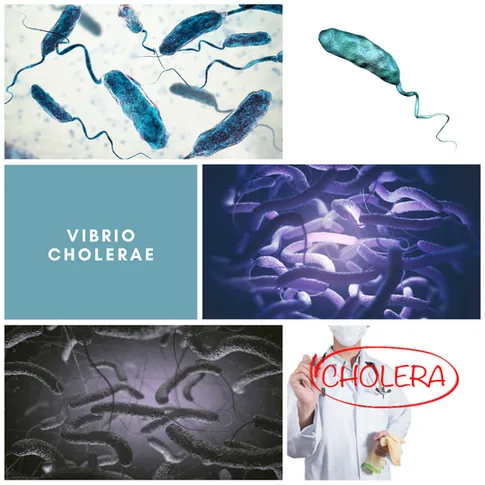
Vibrio cholerae
As promised in the last post, we will show in sequence, 10 of the most unwanted species that can spread through ballast water.
The first one is Vibrio cholerae
Vibrio cholerae is the bacterium that causes Cholera: an acute diarrheal infection caused by ingestion of food or water contaminated with this.
There is much concern about the transmission of potentially pathogenic bacteria. And one of the possible route is ballast water, because several entities around the world detected Vibrio cholerae in shellfishes collected from ballast water tanks of many ships.
The most famous epidemic in South America began in Peru in 1991, affecting millions of people. In Brazil the outbreak showed the largest number of cases during 1993 and 1994.
Because of this, IMO D-2 standard specifies that ships can only discharge ballast water that meets the following criteria:
Toxicogenic vibrio cholerae (O1 and O139) with less than 1 colony-forming unit (cfu) per 100 millilitres
Cercopagis pengoi
The second unwanted species is Cladoceran Water Flea Cercopagis pengoi, or the fishhook waterflea, is a species of planktonic cladoceran crustaceans that is native of the Black and the Caspian Sea.
It became an invasive species in the last decades and has spread to some freshwater waterways and reservoirs of Eastern Europe and to the Baltic Sea. Further it was introduced in ballast water to the Great Lakes of North America and a number of adjacent lakes.
These organisms point a socio-economical threat because they interfere with fisheries by clogging nets and fishing gears. Additionally, they are voracious predators and may notably reduce the density of its prey e.g. small-sized cladocerans. In the end, this may aggravate problems of eutrophication.
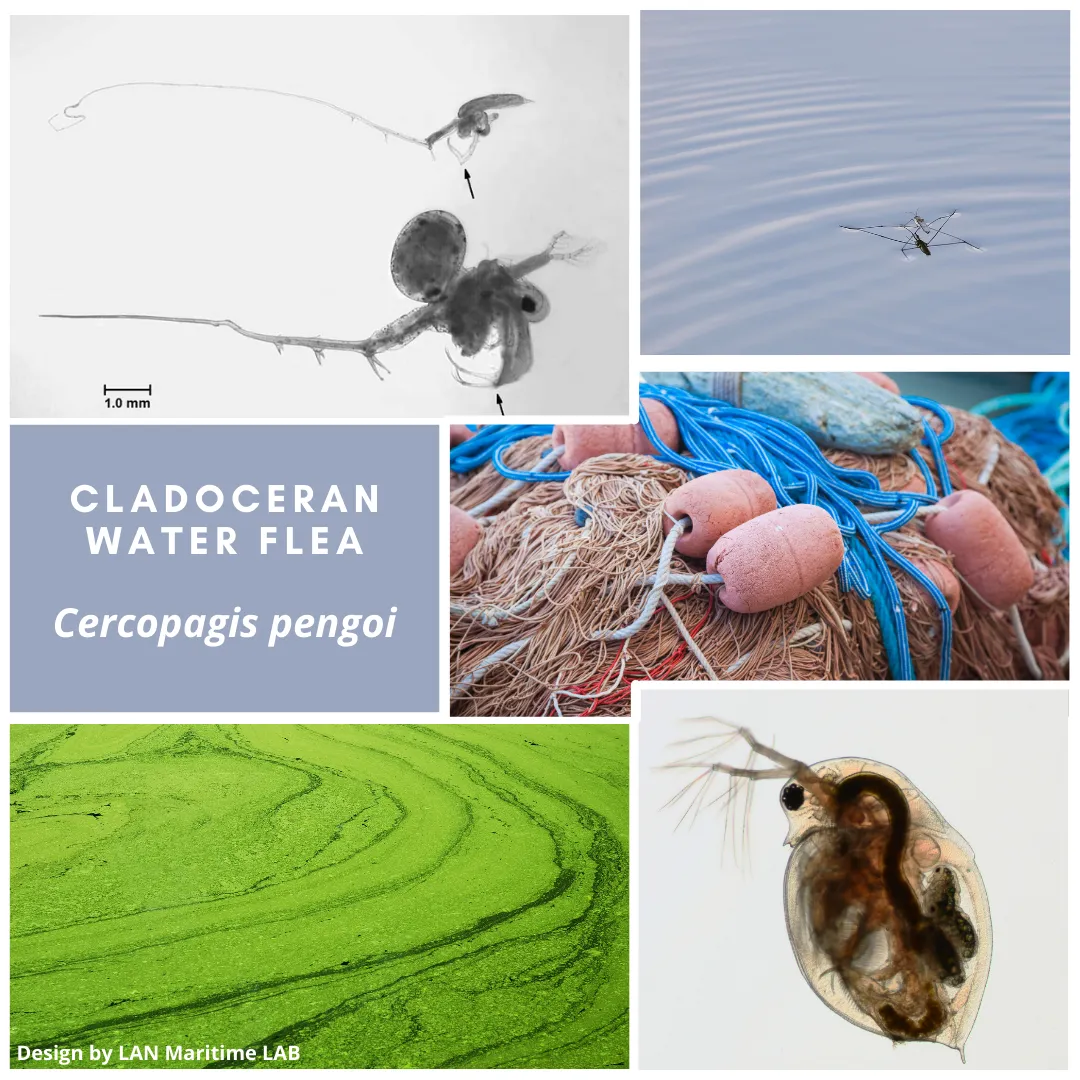
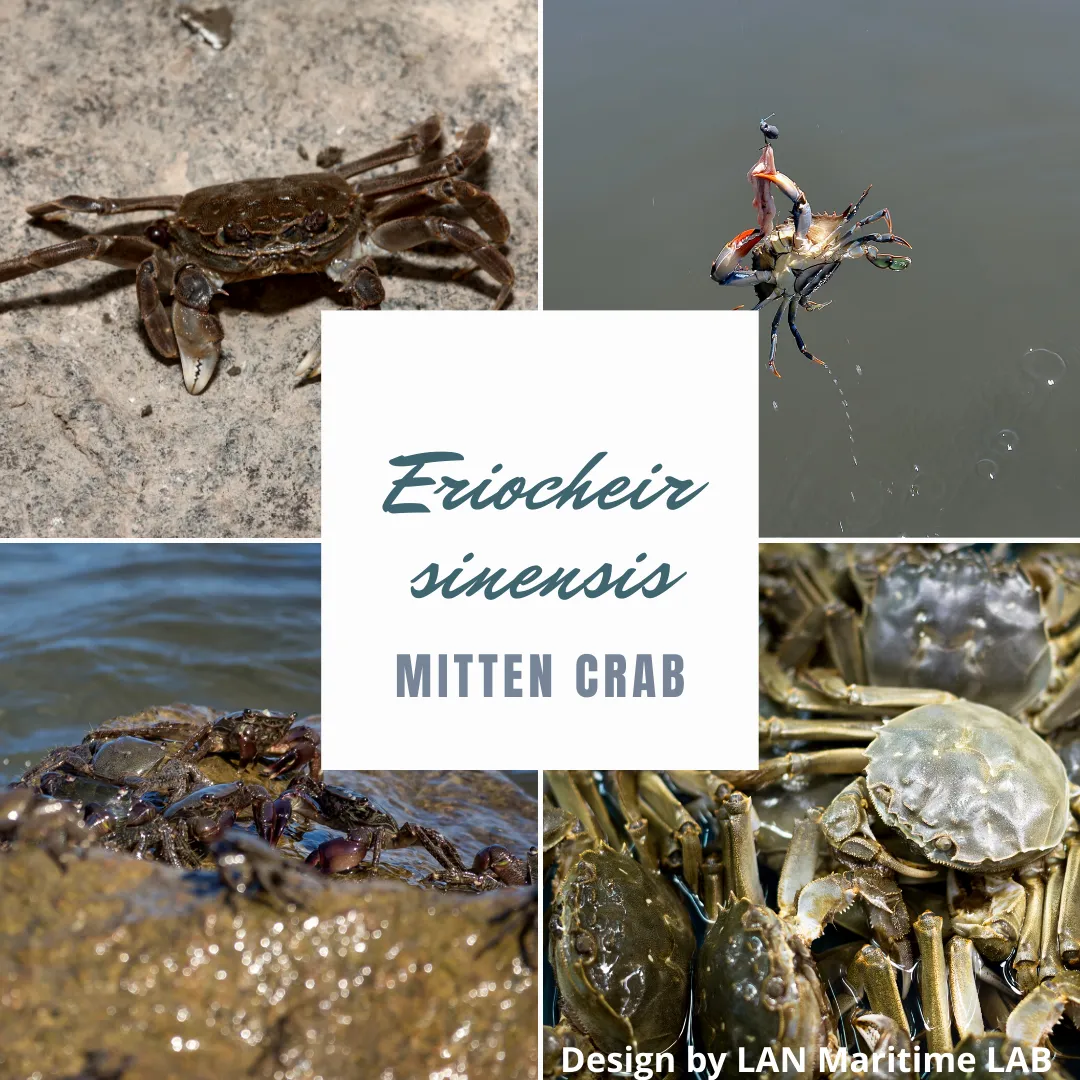
Mitten crab
Due to its dense mat of hair in its claws, Eriocheir sinensis is commonly known as the mitten crab. The THIRD UNWANTED SPECIES of our list.
It originates in the Far East, with native distribution in Fujien province, China. We can list many impacts caused by this crab. Follow the main impacts:
Economic impacts:
– accelerates the erosion of dykes and stream banks, due to the constant excavation activity – affect commercial and recreational fishing because they damage nets, kill species with nets and for loss of bait and damage to fishing gear
Environmental impact:
With huge appetites, the glove crabs attack the local wildlife, simultaneously changing food chains and fishing. They are likely to damage the aquatic food chain in freshwater and estuarine habitats. They are omnivorous and non-discriminatory in their diet.
Social impact:
This species hosts the pulmonary worm (Paragonimus westermani) in Asia. Mammals, including humans, are also hosts for this parasite after consuming raw or undercooked crabs.
Toxic algae
Toxic algae (red / brown / green tides)
The term algae encompasses many types of aquatic photosynthetic organisms, both macroscopic, multicellular organisms such as seaweed and microscopic, unicellular organisms like cyanobacteria.
That is the forth unwanted species in our series.
The rapid increase in the population of algae is called algal bloom, and is recognized by the discoloration in the water from their pigments.
The list of impacts caused by toxic algae is extremely large. Let’s talk about the most important ones:
– can block sunlight from reach other organisms, causing a depletion of oxygen levels in the water, killing massive marine life;
– can foul beaches and impact on tourism and recreation;
– may contaminate filter-feeding shellfish and cause fisheries to be closed;
– fish mortality is a huge economic impact;
– illnesses caused by the consumption of contaminated seafood, such as: Paralytic Shellfish Poisoning (PSP), Diarrhetic Shellfish Poisoning (DSP), Amnesic Shellfish Poisoning (ASP).


Round Goby
The round goby is native to the Black and Caspian Sea and its affluents, but has spread and is now established in waterways in the US and Canada. It is one of the most successful invasive fish in recent decades.
This is the fifth unwanted species in our series of ten.
N. melanostomus can reach 25 cm in length and has many biological attributes that facilitate its invasion, that is, wide native range, wide tolerance to environmental conditions, adapts to any habitat, opportunistic feeder, multiple spawning during the prolonged reproductive season. The ability of it to survive in adverse conditions, also in degraded environments, has helped to increase its competitive advantage in relation to native species.
It is a voracious predator that feeds on a variety of invertebrate benthic organisms, fish eggs, but predominantly mollusks (for example, zebra mussel).
N. melanostomus have no commercial value and can negatively impact the activity of fishermen, as they are caught instead of sport fis
Green Crab
Carcinus maenas
Carcinus maenas is one of the most devastating invasive species that severely affects many ecosystems through predation, competition and habitat change.
It is native to northwestern Europe, but has spread to several continents. It is considered omnivorous, that is, it has a very extensive diet.
Competition with other species can cause economic damage to the crab and shellfish industry.
The reduction in the abundance of shellfish due to the predation of C. maenas affects the job security and the revenue that recreational and commercial fishing for crabs and shellfish offers.
The omnivorous diet of C. maenas can degrade habitats and biodiversity, since it feeds on species from more than 100 families, and can cause extinctions of native species.
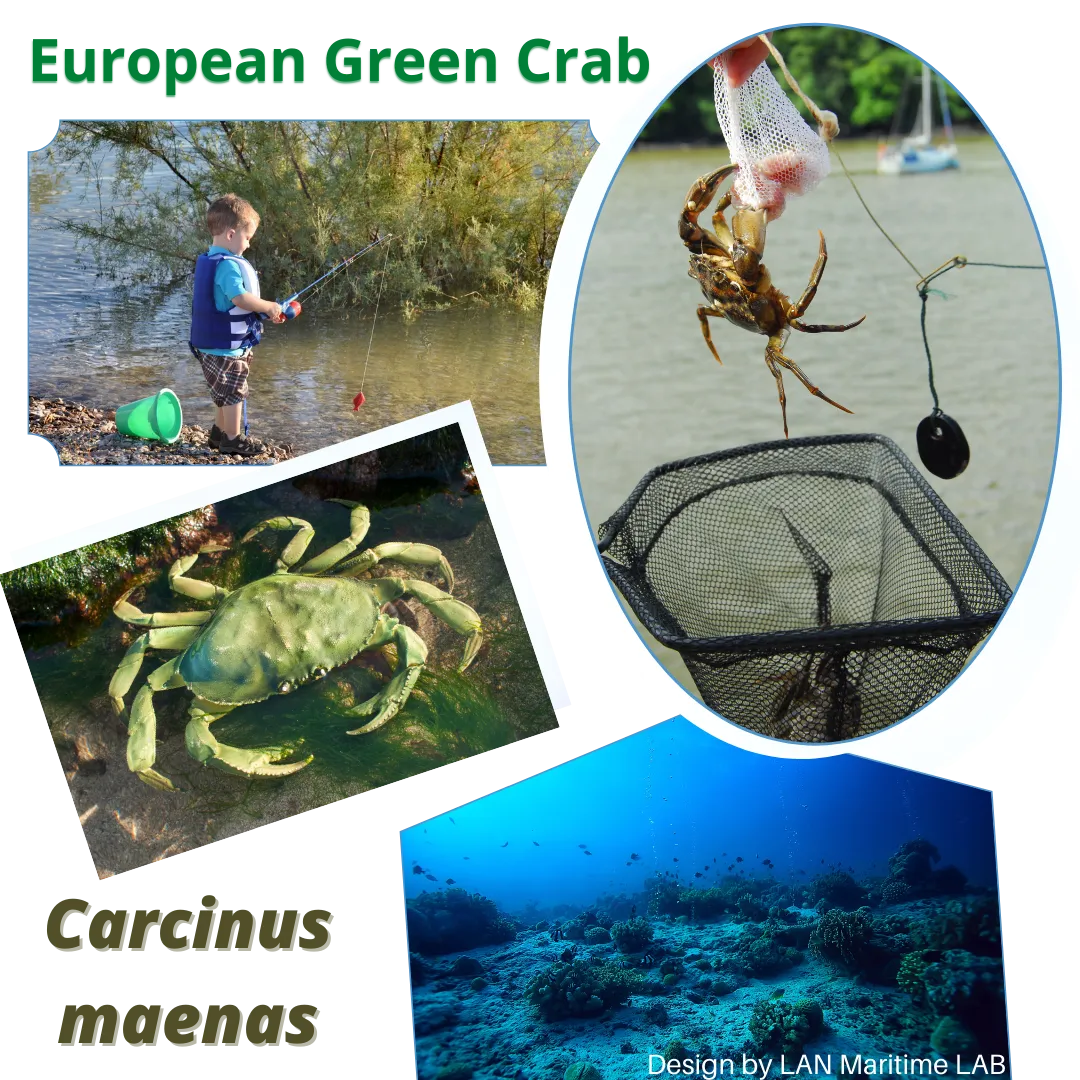
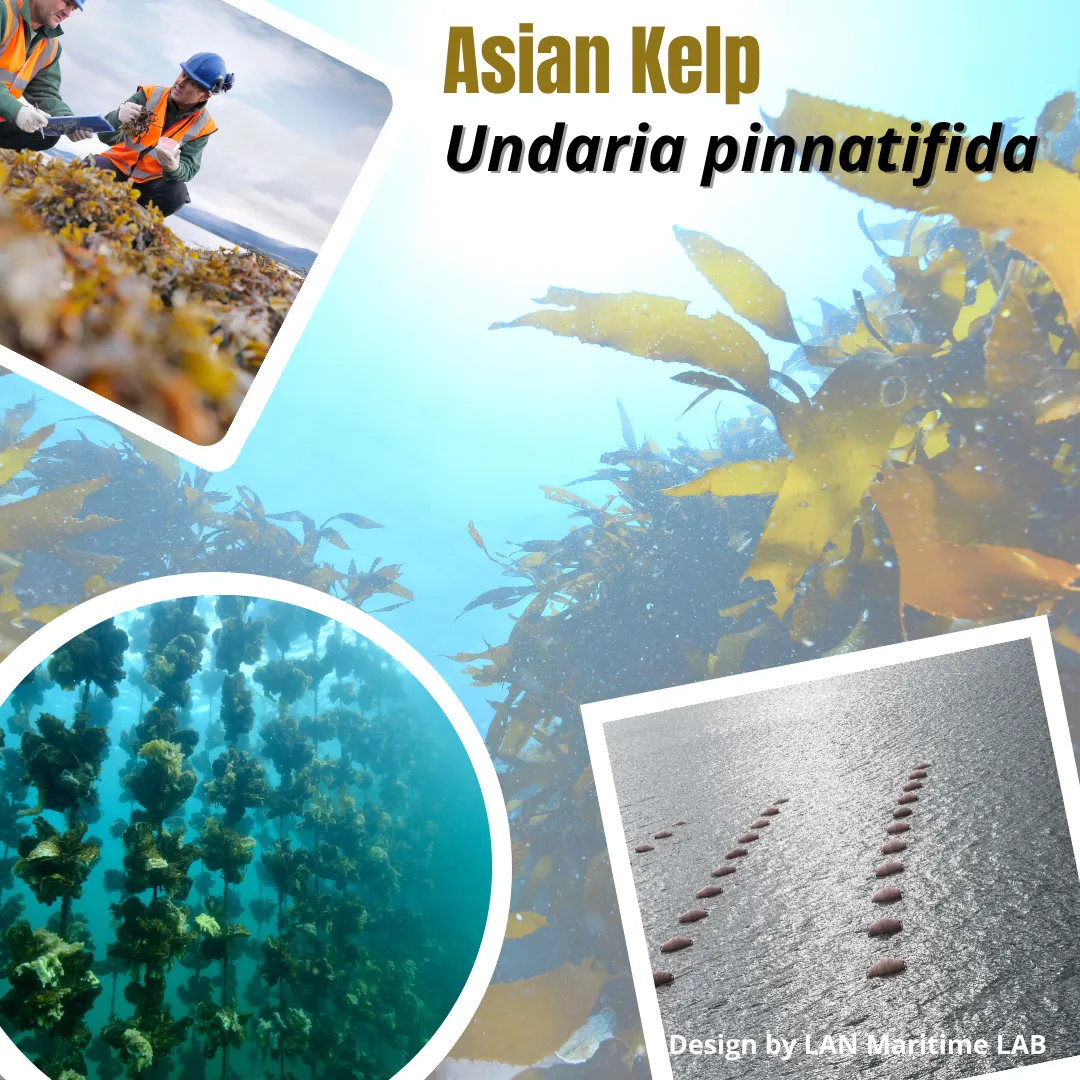
Asian Kelp
Undaria pinnatifida is a brown seaweed that can reach a total length of 1-3 meters. It is native to Northeast Asia and Russia. But it expanded to Europe, Americas and Australia through the ride in the tanks and hulls of ships.
– it can become a problem for marine farms (mussels, salmon) and boats, increasing labor costs for the harvest due to problems of incrustation. Larger infestations can also clog marine agricultural machinery, slow the growth of mussels and restrict water circulation.
– can modify the structure of ecosystems, especially in areas where native seaweed is absent
– it can change the habitat, the ecosystem and the food web as it affects the commercial stocks of mollusks through competition and habitat change.
Zebra Mussel
Dreissena polymorhpa
Zebra mussels originate in southeastern Russia and have spread along waterways or have been transported by ships to different regions of the world.
The prominent pattern of dark and light streaks on the bark is the most obvious characteristic of D. polymorpha. Its specific name, “polymorpha”, derives from its many variations in the color, pattern and shape of the shell.
The list of impacts caused by the spread of this mussel would not fit in this post. So we are going to show only the most serious ones.
– The ability to form large aggregates leads to a serious economic impact as they can accumulate in pipes restricting the flow of water, they can increase corrosion of the pipes, and incrustation of pumps.
– It causes serious damage to biodiversity because it can be attached to other species, decreasing the host’s ability to move, feed, breathe, eventually leading to death.
– They can destroy beaches and when they are decomposed they produce a bad smell, in addition to the bark being a sharp material, keeping bathers away and affecting tourism.
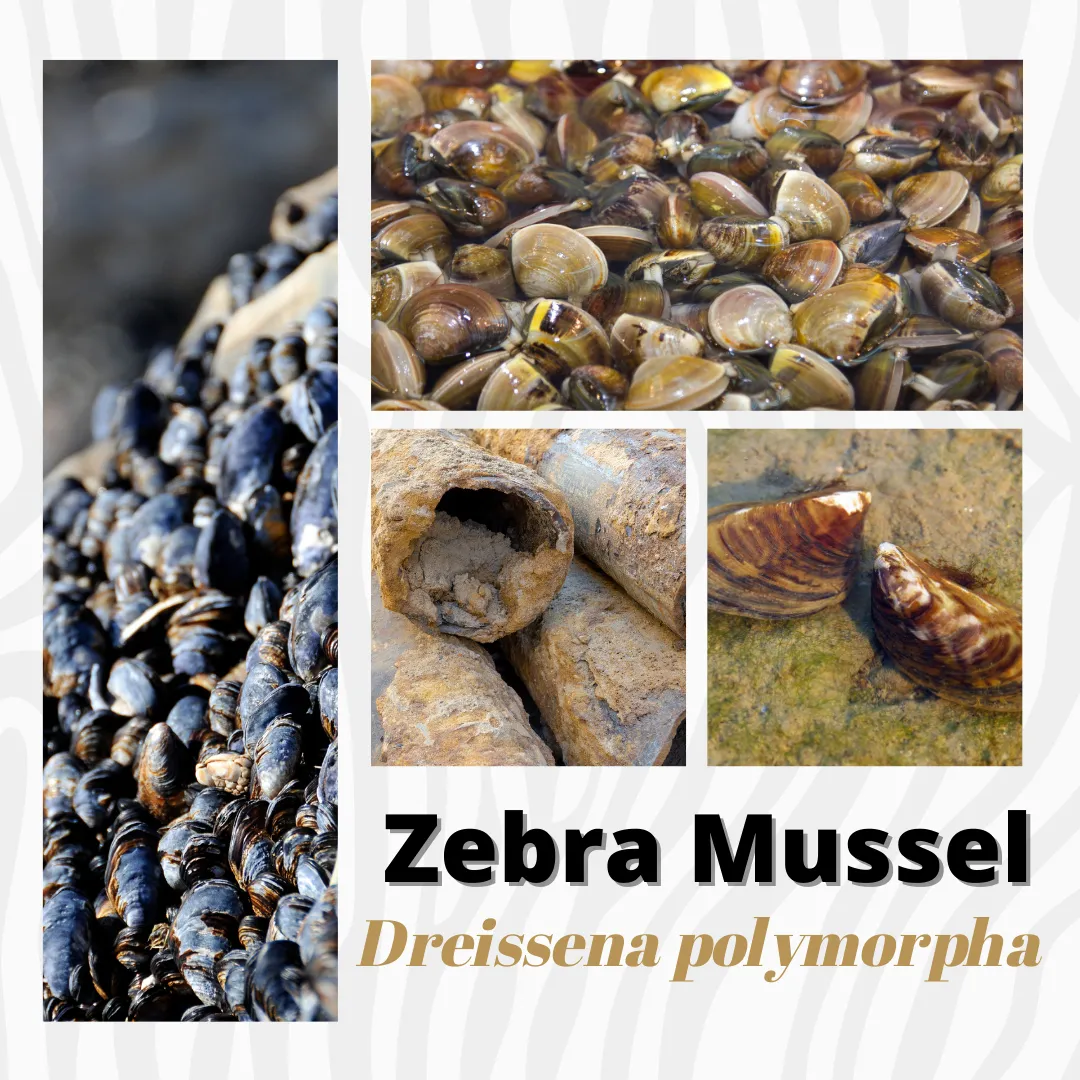
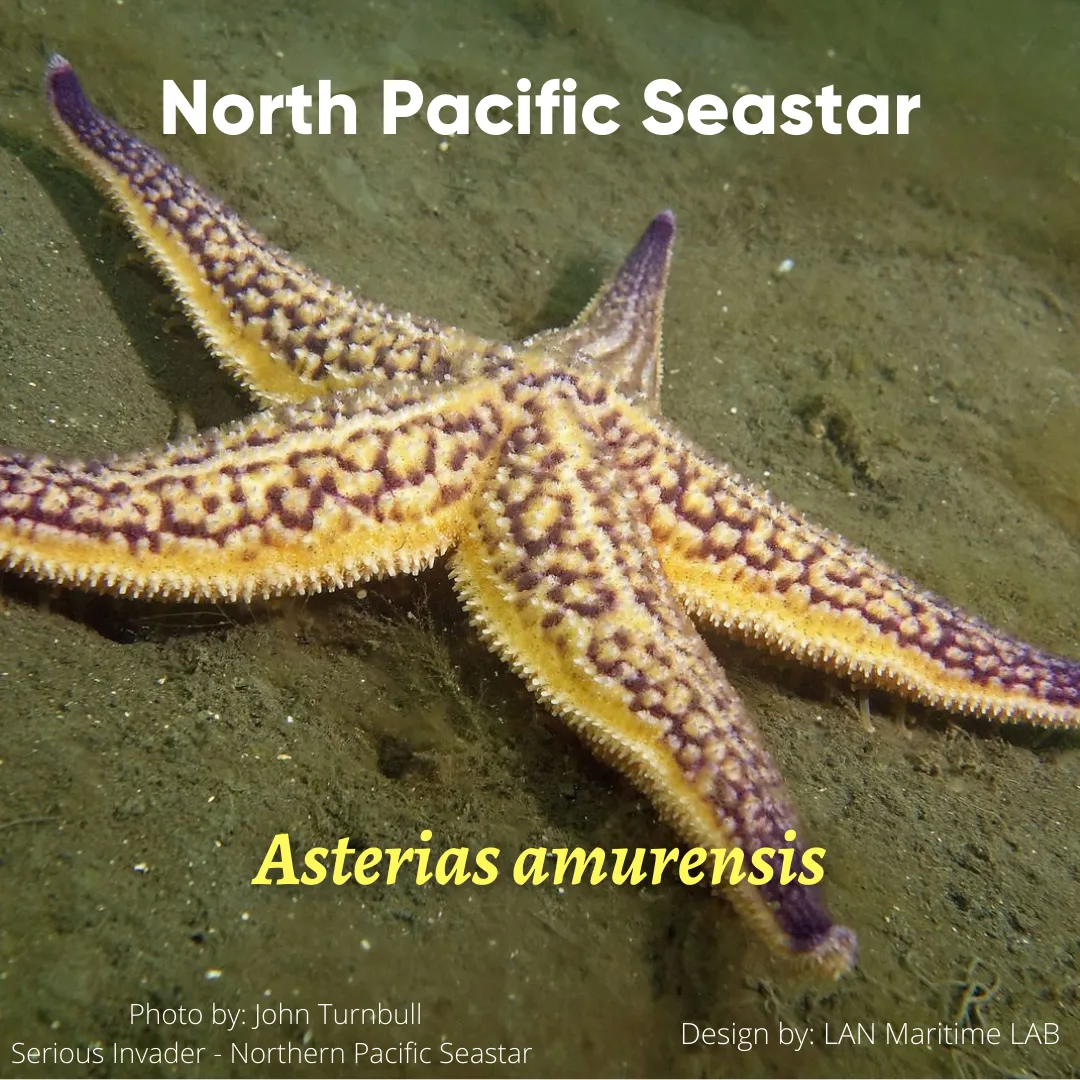
North Pacific Seastar
Asterias amurensis
The penultimate species in the series of 10 is the North Pacific Seastar.
This species is native to Japan, Russia, North China and Korea and can reach 50 centimeters. It presents a yellow color with red and purple pigmentation in its five arms and a small central disc.
Asterias amurensis has the potential to proliferate in new areas as it is well known and widespread, which makes eradication almost impossible.
The starfish is considered a serious pest of native marine organisms as it is a voracious feeder, preferring mussels, scallops and clams.
In Japan, outbreaks of seastars are estimated to have cost the mariculture industry millions of dollars.
Therefore, this species is a great threat to the loss of native species as well as species threatened by extinction, impacting aquaculture and fisheries.
Comb Jelly
Mnemiopsis leidyi
The last unwanted species in the series, but no less important is Comb Jelly.
Mnemiopsis leidyi is native to the coastal waters of the Western Atlantic, but has spread to regions in Europe and Asia. It can reach 100mm in length. It has four rows of small trapped combs that are iridescent during the day and can glow green at night.
Mnemiopsis feeds excessively on zooplankton, depleting its stock and altering food network and ecosystem function. This means that there is a competition with several commercial fish as they feed on the same zooplankton.
Among the environmental impacts, we highlight the reduction of water transparency, alteration of nutrient content and biota.
